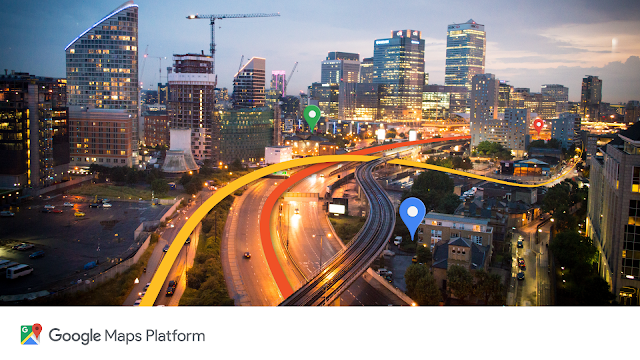Posted by Ethan Welty, Co-founder, Falling Fruit
Editor’s note: Today’s post comes from Ethan Welty, Co-founder of Falling Fruit, a nonprofit that helps city dwellers harvest for food in their neighborhoods. Falling Fruit’s global map marks locations in 111 countries, and its website and mobile apps have been accessed by nearly 1 million people. Falling Fruit was able to access Google Maps Platform through Google for Nonprofits to build its global map.  Learn more about the products and resources available through Google for Nonprofits.
We don’t typically think of cities as places to forage for food. But there is fresh food ready for picking on our city streets if you know where to find it. We created Falling Fruit to help people recover food that would otherwise go to waste. The interactive maps on our website and mobile apps are built using Google Maps Platform, helping us create the bridge between our users and the large amounts of data we collect on food-bearing trees, plants, and other foraging opportunities.
My co-founders and I blew minds everytime we harvested fruit in Boulder, Colorado (where we all lived at the time). People said, “Is that edible?” and “I never noticed those were apples!” Excited by our delicious discoveries, and dismayed by the perceptual divide between city dwellers and their food, we were determined to shine light on food growing in cities everywhere.
Falling Fruit is a type of matchmaking service for urban foragers. People enter an address to find the foraging opportunities that surround them – from fruits and nuts like apples (Malus sp.), plums (Prunus sp.), and pecans (Carya illinoinensis) to edible flowers like elderberry (Sambucus sp.) and black locust (Robinia pseudoacacia), and spices like lavender (Lavendula sp.) or pink peppercorns (Schinus molle, Schinus terebinthifolius).
While we encourage users to submit new listings, most of our data comes from cities and universities, which often make their tree inventories publicly available. Our worldwide map lists more than 2,300 types of edibles in more than 1.3 million locations. Although most locations are publicly accessible, private property owners sometimes add themselves to the map to share their harvest with others.
Using Google Maps Platform, a small, volunteer-driven nonprofit like ours can create maps and integrate data sets in less time. We use the
Maps JavaScript API to display foraging locations within detailed interactive basemaps on our website and mobile apps. The
Geocoding API converts between map coordinates and human-readable addresses, so, for example, users can add or search for locations based on a street address, and we can list new locations by city. We use the
Directions API to allow users to build custom routes between locations.
With locations in 111 countries and 6,340 cities (and users scattered across the globe), we rely on other Google APIs to help us break through language barriers. We use the
Cloud Translation API to give human translators a head start in translating our user interfaces (the website is available in nine languages). In our larger effort to build a multilingual dictionary of species common names, we use the
Custom Search API to determine which “common names” for a species in a particular language are in fact the most common.
With help from Google, we can continue to use the Maps APIs without stretching our small budget too thin. The Google Maps Platform credit covers the usage cost as we attract more users to Falling Fruit. The APIs’ accurate documentation also helps us run Falling Fruit more efficiently. Tasks like converting between map coordinates and addresses now run automatically in the background, which frees up time that we can devote to other projects – like adding new features to the mobile app, importing new city tree inventories, and partnering with nonprofits with similar missions, such as
Community Fruit Rescue.
Once you start looking for food-bearing plants in your city, you’ll realize that you’ve been surrounded by them all along. We’re excited that Falling Fruit is helping to reimagine cities as a source of food. Over half of the world’s population lives in urban areas: We want them to realize that there is edible bounty ready to be harvested, just down the street or around the corner. As the popularity of urban foraging grows, I hope that we can organize ourselves to cultivate increasingly more food-bearing (rather than just decorative) plants in our cities.














